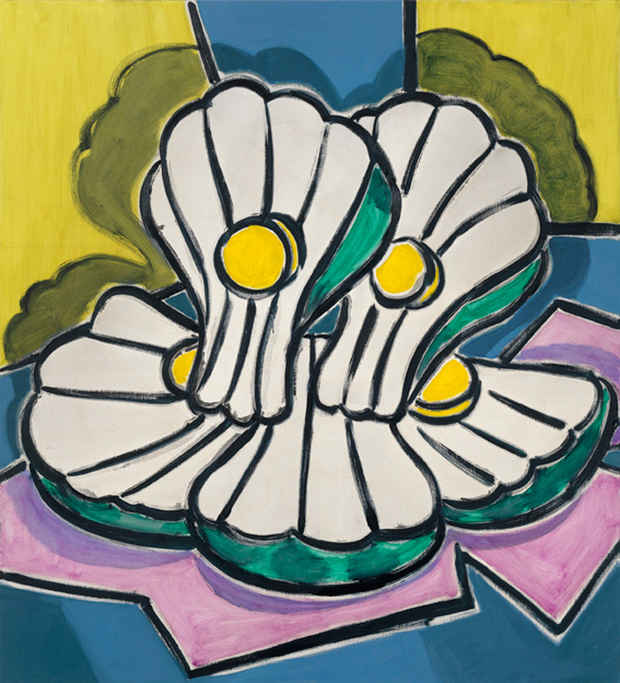Ansel Krut Exhibition
Marlborough Chelsea

This event has ended.
At first blush, Ansel Krut’s paintings might be considered quite old-fashioned in their making and appearance. Modest in scale and loosely taking portraiture and still-life as their subject, they could have conceivably been produced almost anywhere in the West in the last 100 years. While familiar, they are not terribly similar to any specific artist or movement. Instead, the work pays homage to (and wreaks havoc with) the entirety of painting and its conventions in a way that seems appropriate in an age of endless streaming imagery.
While giving an initial impression of casual, wacky improvisation, each work is first carefully composed and solidified in a small preparatory watercolor. Image, color, figure and ground, line and volume are sorted out in this stage and then transcribed in oil paint to the canvas where texture and gesture complete the work. It is here that Krut ignites this peculiar content with a uniquely masterful paint handling. His touch is just light enough, showing a restraint that his subjects seem to lack and a commitment to formal basics. Cones, planes, and other simple shapes come together to create figures and faces that seem to mimic the simple tricks taught in drawing classes, and the flowers, models and bottles depicted seem to carry with them the self-awareness of their conventionality. These subjects often seem to be wearing disguises, as if they know they are clichés that have been perverted by the hand of their creator.
Closer scrutiny of the paintings begins to reveal a more freighted and darker aspect as well. The faces, cobbled together from vegetables, balloons, body parts and bottles seem to luridly ogle back at the viewer, and others hint at the violence hidden beneath the surface of cool Modernism and anticipated by Expressionism. The works can hold within them the acknowledgement that, within the context of painting since 1900, pleasure, perversity and annihilation have been inexorably equated.
There is immediate humor, showbiz razzle-dazzle, slapstick sexuality, but also creeping dread and the suggestion of menace imbedded in each of these paintings— and not only in the instance of an image of a bowler-hatted penis in a hat smoking a pipe, but also with each seemingly innocent bouquet of flowers. If Nathanael West’s artist-protagonist in The Day of the Locust had been a South African transplanted to London rather than a New Englander to Los Angeles, West might have imagined him making works like these: wacky come-ons that begin with some slap-and-tickle and end with a smack to the face.
The dynamic and genuinely surprising layering of the compositions—serious and striated black and white grounds supporting a cartoonishly vaginal floral arrangement in orange, yellow and aquamarine, for example—are clues to the sophistication of Krut’s practice. Black outlines, and the chromatic volumes they describe, often maintain a nimbus of untouched gesso around them creating a vibrating forcefield effect around the shapes and provide a dynamism that is equivalent to the juiciness of the subject matter.
In Hello, Sailor! (2012), which might just as easily be titled The Birth of Penis, a phallus springs forth from its clamshell “ta-daaa!” possibly appended to, or merely admired by, the titular sailor. Behind him, encircling outlines mirror his outstretched arms and curiously bifurcated head and even more curious patches of sparsely-applied baby blue pigment. It is hard to overstate the powerful tension between the corniness of the scene and the uniquely skillful, Freudian drama evoked by the formal choices and painterly technique.
Media
Schedule
from February 21, 2013 to March 30, 2013
Opening Reception on 2013-02-21 from 18:00 to 20:00